2019 - the year Intel stopped
Looking into the future is a risky talent, but today there is a situation on the microprocessor market, which, perhaps, has been developing for the first time since 1978. Intel, which ruled the semiconductor technology production ball, for the first time in 40 years loses its grip, yielding the title of the leader of the notorious TSMC company, which has long established itself as a partner and manufacturer of NVidia graphics chips, and from next year - AMD.
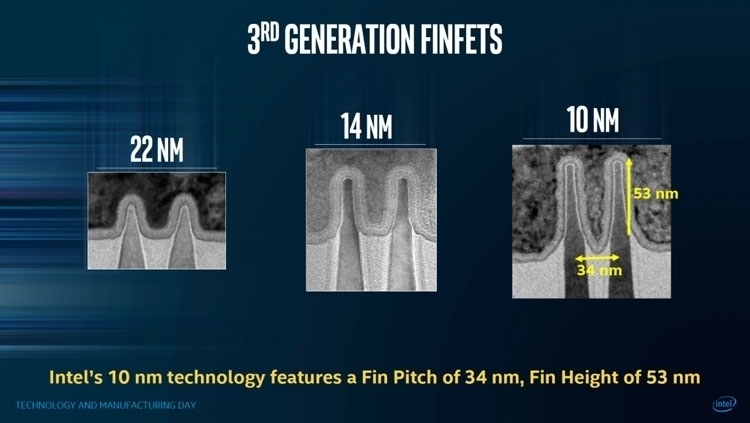
Back in 2014 now far, Intel planned to take another step forward in conquering the frontiers of the technical process, presenting the first model based on 10-nm technology - but due to technical problems, the transition to a new, revolutionary by that measure technical process was postponed. First for a year, then for two, and then for an indefinite period. However, Intel nevertheless took the first steps towards the long-awaited transition to the 10nm, presenting ultra-efficient processors for thin notebooks to the public.
')
But while Intel was treading on the spot with the problematic "ten", AMD managed to create the impossible. With the release of the new generation of Ryzen processors in 2016, Red managed not only to interest ordinary users and enthusiasts, but also to create for themselves a universal platform for bold experiments, thanks to which both the desktop desktop solutions of the Threadripper family and the server family of EPYC processors turned the light on. all ideas about the possibilities of the red giant, long left this segment of the market.
In just 2 years, AMD managed to work on the bugs, and presenting a new, improved version of the previous architecture, surprising and delighting the fans - the Ryzen 2 took into account almost all the flaws of its predecessor, the second-generation Threadripper promises 32 (!) Cores where even 16 were rather well surprised and EPYC is about to burst into a multitude of enterprise-class companies, displacing the absolute king of the server segment. For this, the blue ones were completely unprepared ...
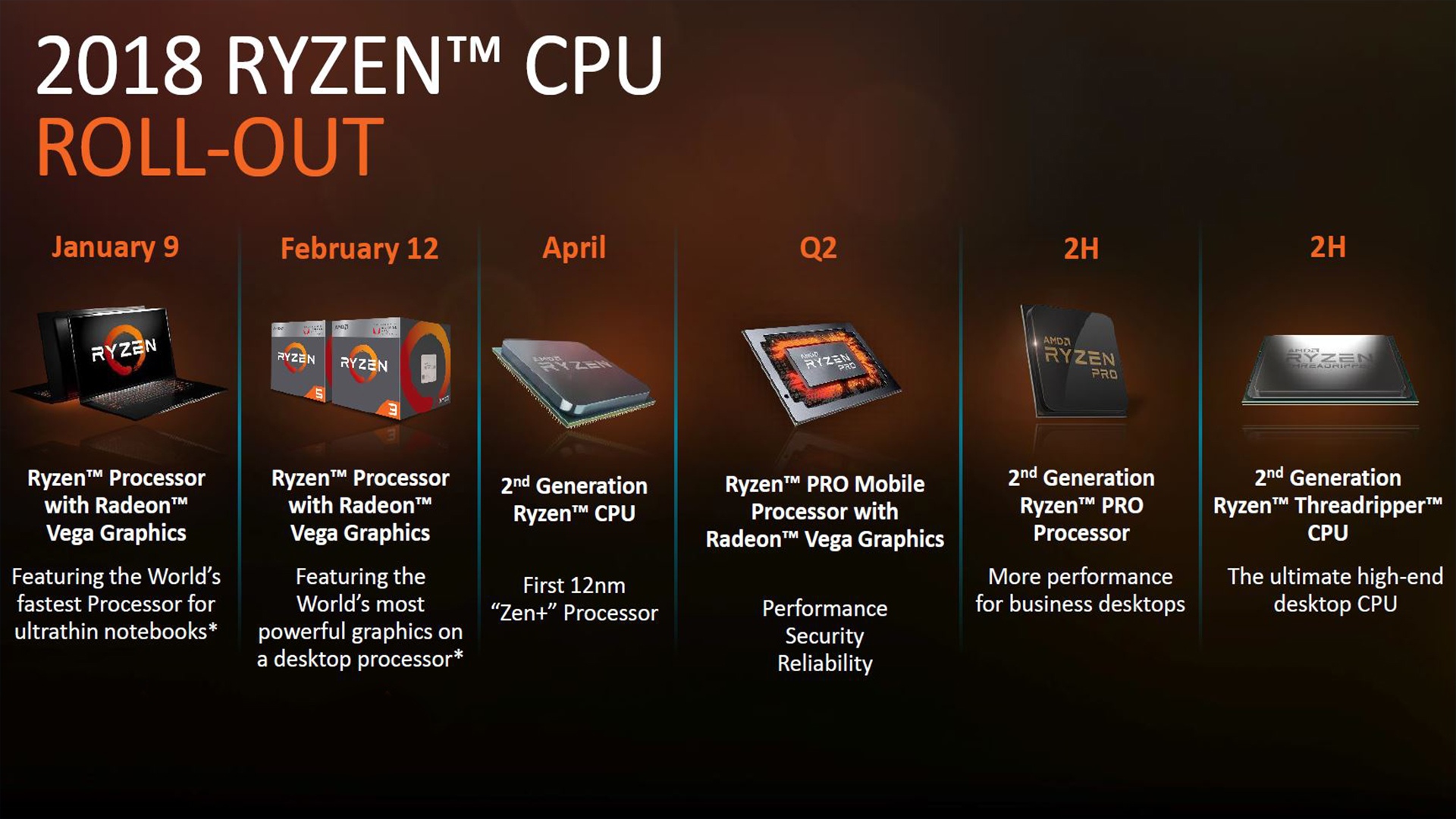
Literally everything testified to this - from trying to discredit EPYC with a statement about “cores glued together” in the Xeon advertising brochure, to summer jokes on Computex, where before thousands of viewers, Intel presented “the first 28-core processor running 5 GHz out of the box”. The presentation, despite the short-term wow effect, suffered a crushing fiasco (when everyone found out WHAT equipment used at Intel to achieve results in Cinebench).
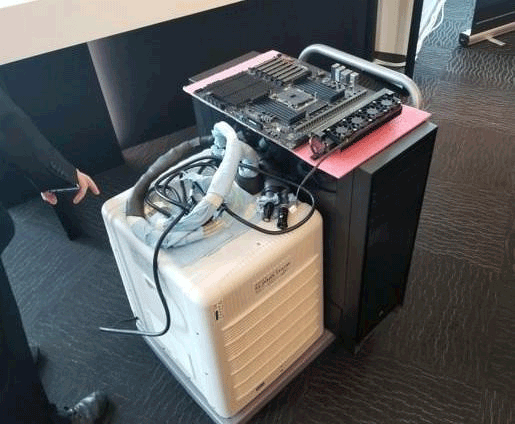
The Hailea HC chiller, as well as a 1600 watt power supply, used by Intel on Computex-2018 to achieve a score of 7334 Cinebench.
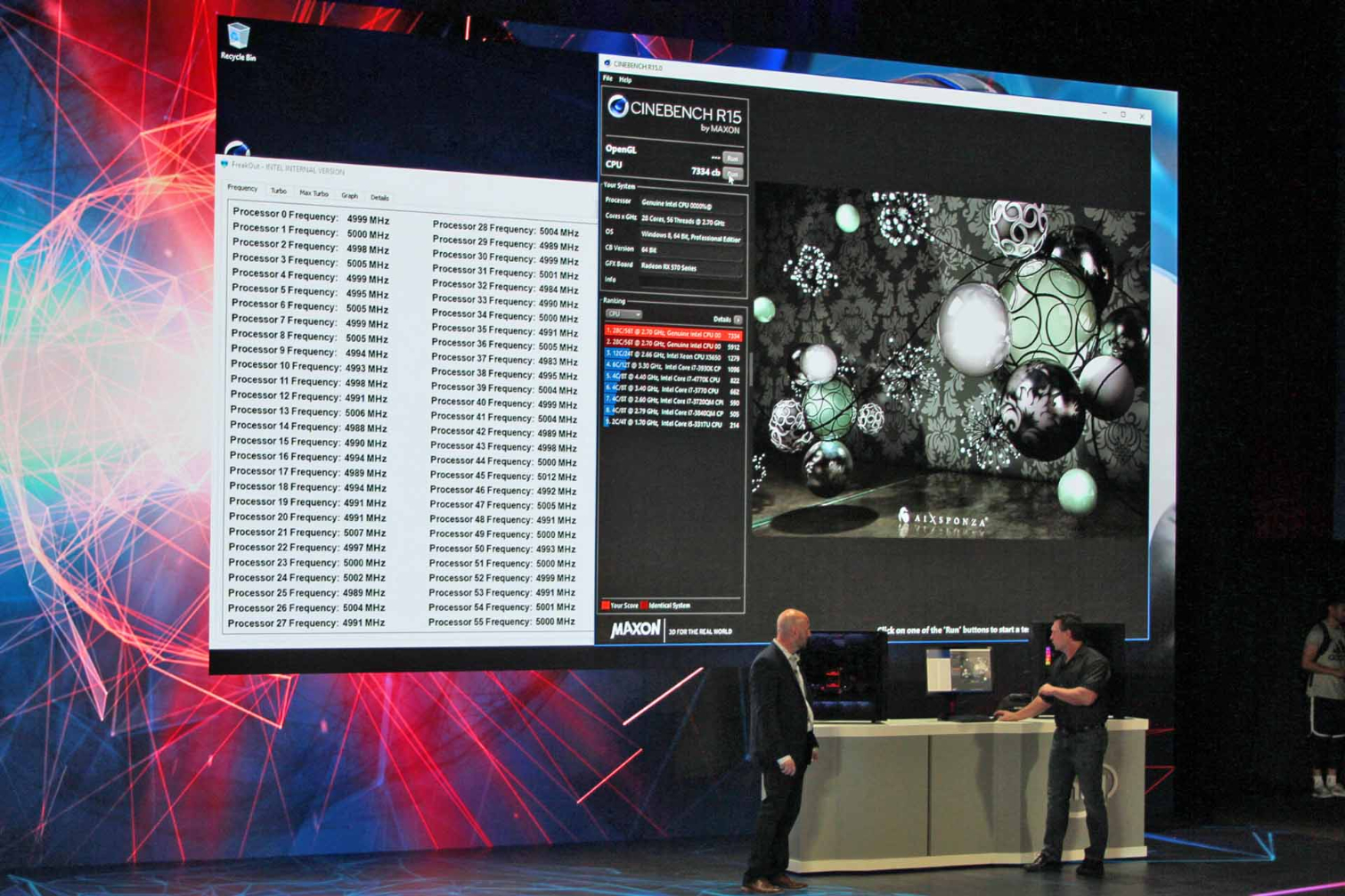
Of course, this was a kind of response to the second-generation AMD Threadripper, in which the red, without any ceremony, announced 32 cores in the new processors - but if the AMD product worked successfully and even had the possibility of air cooling (!), Then in the case of the product Intel turned out to be completely the opposite.
But the blue giant is not going to give up without a fight - so, against the background of numerous alarm bells, Intel decided to make a big bet on the future generation. The nine-thousand processor series is rumored to be an uncompromising step forward in the struggle for the love of the mass public - not only the solder return (forgotten blue after the release of Sandy Bridge) is expected, but also full compliance with the number of cores and threads, which means the appearance of the configuration 8/16 on replacing the current i7 8700k. A lot of questions are raised - for example, what will happen to the processor's thermal package if the six-core flagship is now experiencing a number of problems with thermoregulation at 5 GHz even when using expensive water cooling. Or the notorious increase in the cost, which Intel has been sinning for many years in a row - hardly a flagship processor for $ 400 will be a tempting offer against the background of a competitor.
And this is not about Ryzen 2, which feels great against the muscular Coffee Lake, but about its successor, who will be born on the new Zen 2 architecture. AMD has long decided to take a big step forward, leaving behind the ill-fated 10 nm - and thanks to the success of the semiconductor giants Global Foundries and TSMC, the transition to 7 nm has become possible now. The first owners of EPYC will be the first to appreciate the wonders of the new process technology - the first processors (along with professional accelerators from VEGA) will receive new revisions and demonstrate the undoubted advantages of a more advanced process technology. But next year, next, the third generation Ryzen is expected to follow, after which not only a beautiful figure, but also many improvements and innovations - starting from the long-awaited growth of IPC and ending with impeccable energy efficiency.
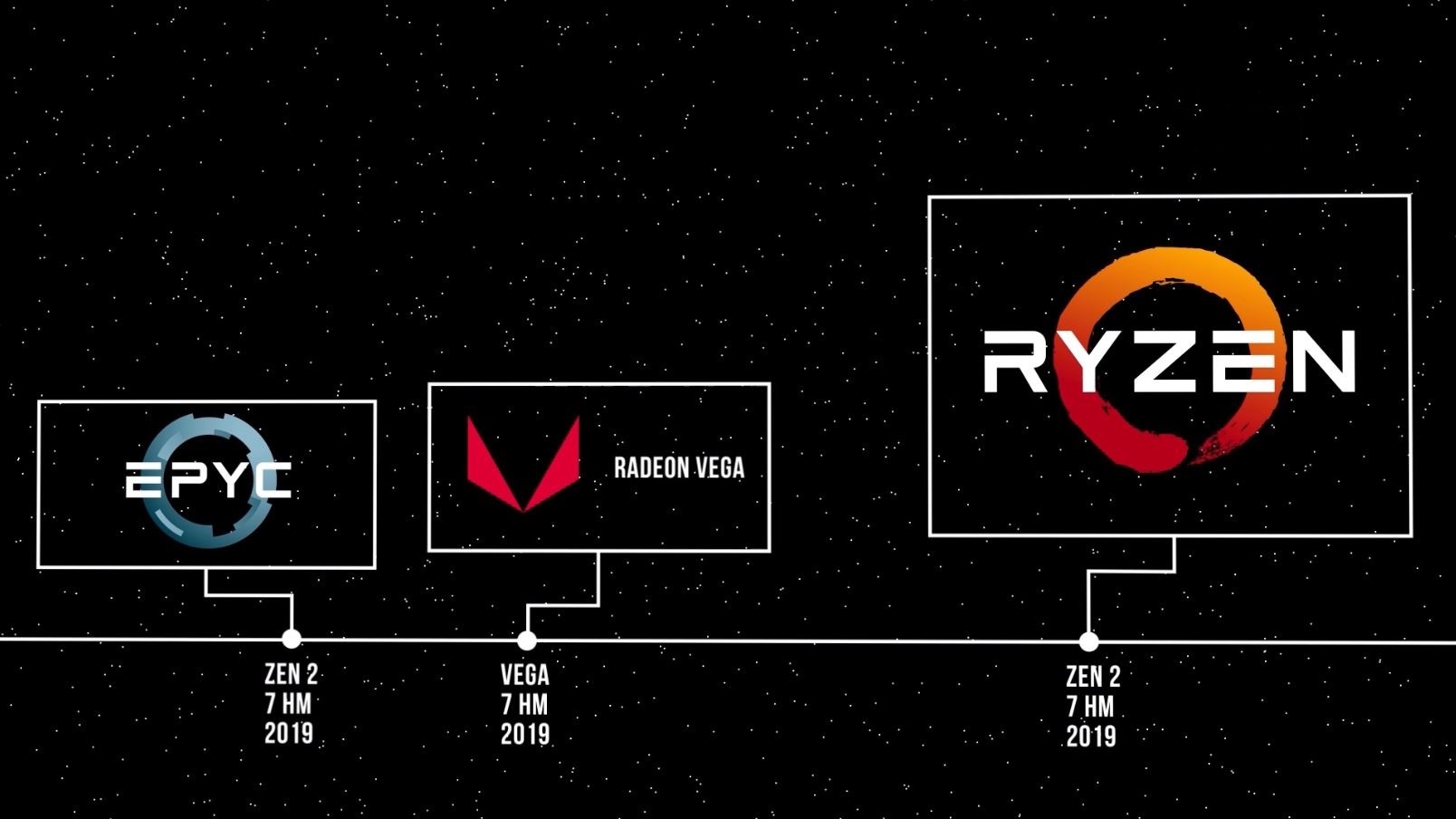
We can talk about serious progress on the last front now - in low-cost versions of their most popular models, the 2700 and 2600, AMD demonstrates the possibility of drastically reducing power consumption by up to 45 W, which even surprises enthusiastic enthusiasts. It is possible that with the release of the 7-nm line, the efficiency of processors will reach a new level - first of all, the owners of portable devices, where Ryzen is showing the class today, will appreciate the benefits of the transition.
What do AMD fans expect from the third Ryzen? Of course, the long-awaited victory in the struggle for first place in the gaming market - taking into account breakthrough tendencies and the confidence of the Reds, this is quite possible, because Intel has not yet resolved the difficulties with 10 nm. It is expected that the nine-thousandth series of Intel processors will remain on the same technical process, and will become the next "work file" with the addition of the number of cores - in this case, the Ryzen 3 side will have a significant advantage, because no one says that the 8/16 configuration will remain unchanged in the new version - taking into account the serious reduction in the size of the crystal, 12-nuclear and even 16-nuclear configurations can expect us (though users believe in 10 and 12 cores much more readily than in the same 16 — time will tell).
Be that as it may, the new round of processor wars is already on the way - not only hot decisions from Intel, but also daring candidates for new records and ovations from AMD are waiting for us. We look forward to the next, 2019 - it will be interesting!
Our video on this topic:
The author of the text is Alexander Lis.

Back in 2014 now far, Intel planned to take another step forward in conquering the frontiers of the technical process, presenting the first model based on 10-nm technology - but due to technical problems, the transition to a new, revolutionary by that measure technical process was postponed. First for a year, then for two, and then for an indefinite period. However, Intel nevertheless took the first steps towards the long-awaited transition to the 10nm, presenting ultra-efficient processors for thin notebooks to the public.
')
But while Intel was treading on the spot with the problematic "ten", AMD managed to create the impossible. With the release of the new generation of Ryzen processors in 2016, Red managed not only to interest ordinary users and enthusiasts, but also to create for themselves a universal platform for bold experiments, thanks to which both the desktop desktop solutions of the Threadripper family and the server family of EPYC processors turned the light on. all ideas about the possibilities of the red giant, long left this segment of the market.
In just 2 years, AMD managed to work on the bugs, and presenting a new, improved version of the previous architecture, surprising and delighting the fans - the Ryzen 2 took into account almost all the flaws of its predecessor, the second-generation Threadripper promises 32 (!) Cores where even 16 were rather well surprised and EPYC is about to burst into a multitude of enterprise-class companies, displacing the absolute king of the server segment. For this, the blue ones were completely unprepared ...

Literally everything testified to this - from trying to discredit EPYC with a statement about “cores glued together” in the Xeon advertising brochure, to summer jokes on Computex, where before thousands of viewers, Intel presented “the first 28-core processor running 5 GHz out of the box”. The presentation, despite the short-term wow effect, suffered a crushing fiasco (when everyone found out WHAT equipment used at Intel to achieve results in Cinebench).

The Hailea HC chiller, as well as a 1600 watt power supply, used by Intel on Computex-2018 to achieve a score of 7334 Cinebench.

Of course, this was a kind of response to the second-generation AMD Threadripper, in which the red, without any ceremony, announced 32 cores in the new processors - but if the AMD product worked successfully and even had the possibility of air cooling (!), Then in the case of the product Intel turned out to be completely the opposite.
But the blue giant is not going to give up without a fight - so, against the background of numerous alarm bells, Intel decided to make a big bet on the future generation. The nine-thousand processor series is rumored to be an uncompromising step forward in the struggle for the love of the mass public - not only the solder return (forgotten blue after the release of Sandy Bridge) is expected, but also full compliance with the number of cores and threads, which means the appearance of the configuration 8/16 on replacing the current i7 8700k. A lot of questions are raised - for example, what will happen to the processor's thermal package if the six-core flagship is now experiencing a number of problems with thermoregulation at 5 GHz even when using expensive water cooling. Or the notorious increase in the cost, which Intel has been sinning for many years in a row - hardly a flagship processor for $ 400 will be a tempting offer against the background of a competitor.
And this is not about Ryzen 2, which feels great against the muscular Coffee Lake, but about its successor, who will be born on the new Zen 2 architecture. AMD has long decided to take a big step forward, leaving behind the ill-fated 10 nm - and thanks to the success of the semiconductor giants Global Foundries and TSMC, the transition to 7 nm has become possible now. The first owners of EPYC will be the first to appreciate the wonders of the new process technology - the first processors (along with professional accelerators from VEGA) will receive new revisions and demonstrate the undoubted advantages of a more advanced process technology. But next year, next, the third generation Ryzen is expected to follow, after which not only a beautiful figure, but also many improvements and innovations - starting from the long-awaited growth of IPC and ending with impeccable energy efficiency.

We can talk about serious progress on the last front now - in low-cost versions of their most popular models, the 2700 and 2600, AMD demonstrates the possibility of drastically reducing power consumption by up to 45 W, which even surprises enthusiastic enthusiasts. It is possible that with the release of the 7-nm line, the efficiency of processors will reach a new level - first of all, the owners of portable devices, where Ryzen is showing the class today, will appreciate the benefits of the transition.
What do AMD fans expect from the third Ryzen? Of course, the long-awaited victory in the struggle for first place in the gaming market - taking into account breakthrough tendencies and the confidence of the Reds, this is quite possible, because Intel has not yet resolved the difficulties with 10 nm. It is expected that the nine-thousandth series of Intel processors will remain on the same technical process, and will become the next "work file" with the addition of the number of cores - in this case, the Ryzen 3 side will have a significant advantage, because no one says that the 8/16 configuration will remain unchanged in the new version - taking into account the serious reduction in the size of the crystal, 12-nuclear and even 16-nuclear configurations can expect us (though users believe in 10 and 12 cores much more readily than in the same 16 — time will tell).
Be that as it may, the new round of processor wars is already on the way - not only hot decisions from Intel, but also daring candidates for new records and ovations from AMD are waiting for us. We look forward to the next, 2019 - it will be interesting!
Our video on this topic:
The author of the text is Alexander Lis.
Source: https://habr.com/ru/post/424035/
All Articles